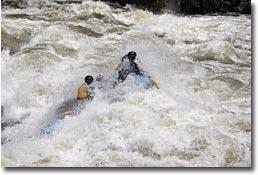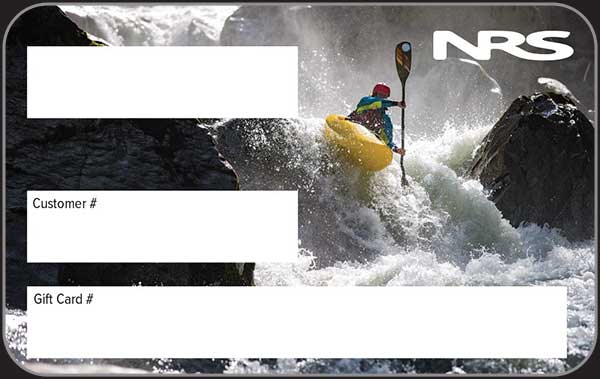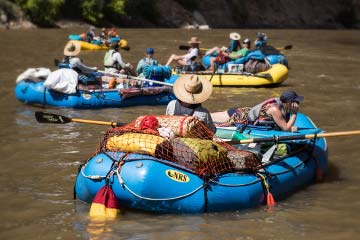
Prevent Boating Injuries and Stretch for Better Paddling
Paddling and rowing are repetitive motions that put stress on the shoulders, wrists, back, and core. Whether you’re gearing up for the first trip of the season or trying to stay limber for long days on the water, a combination of conditioning, proper technique, and consistent stretching will help prevent pain and injury. Taking care of your body off the water pays off every time you get in the boat.
Conditioning for Paddlers
 Hopefully you’ve been keeping up a program of exercise and stretching through your off season. If so, you’re ready to start boating come spring. But if your winter exercise has consisted largely of reaching into the chip bag and operating the remote control, jumping straight into high-intensity paddling is asking for injury.
Hopefully you’ve been keeping up a program of exercise and stretching through your off season. If so, you’re ready to start boating come spring. But if your winter exercise has consisted largely of reaching into the chip bag and operating the remote control, jumping straight into high-intensity paddling is asking for injury.
Conditioning builds strength and endurance in the muscles used most for paddling—chest, arms, shoulders, upper and lower back, and abdomen. You can work out at a gym or at home. Most gyms have trainers who can help you design a program, and there are plenty of good books and online resources. The important thing is to “just do it” on a regular basis. Adopt a balanced program that includes both aerobic (running, bicycling, yoga, etc.) and anaerobic (weight training, push-ups, etc.) exercise. Paddling itself is excellent conditioning, but when first beginning the season, start easy and work your way up to longer sessions.
Warming Up Before You Paddle
Before paddling, it’s important to warm up the muscle groups you’ll be using. Warming up increases blood flow, raises your heart rate, and prepares your joints for motion. Spend a few minutes jogging in place, jumping rope, doing jumping jacks, or riding a bike—anything that heats your muscles and elevates your heart rate. Then, make the same motions you’ll use on the water: rotate your shoulders forward and back, twist and lean your torso, move your body forward and back. Repeat these motions until your muscles feel loose and ready.
Stretching for Paddlers
Stretching is essential for preventing muscle strain and healing injuries. It improves flexibility and elasticity, reducing the risk of overextension or strain during hard strokes or rough water. You should stretch daily—at least before and after exercising—and always before and after you paddle. Move slowly, never bounce, and hold each position for 10–20 seconds. Stretch until you feel gentle tension, not pain. A regular stretching routine will keep you on the water longer, more often, and with greater enjoyment.
Neck
Rolling a kayak can put a lot of stress on your neck. Keep neck muscles loose by nodding your head gently forward and backward, then slowly turning your head to each side, looking behind your shoulders. You can also tilt your head toward each shoulder or rotate it clockwise and counterclockwise. Do each exercise slowly, hold each position (except rotations) for a few seconds, and repeat a few times.
Torso
Perform the same types of movements as for the neck, but focus on paddling-specific stretches. While seated on the ground in a normal paddling position, hold your hands out in front of you as if holding a paddle. Twist your torso back and forth, holding each twisted position for 10 to 20 seconds. Repeat several times. This helps keep your core flexible and reduces lower back tension.
Legs
While seated, reach forward and hold your toes, keeping your legs straight. Hold for 10 to 20 seconds and repeat. While standing, spread your legs wider than shoulder width and reach for your toes or the ground. Hold for 10 to 20 seconds, then come back up slowly. Repeat three or four times, moving your feet slightly closer together each time until they’re touching, and reach as far as you can each time. These stretches help with hamstring and lower back flexibility.
Wrists and Ankles
Roll your wrists and ankles clockwise and counterclockwise a few times. Take hold of your fingers on one hand with the other and gently bend your hand back (toward the top of your forearm) and forward (toward the bottom of your forearm), holding each position for 10 to 20 seconds. Do this for each hand. Strong, flexible wrists help prevent tendon strain from repetitive paddle strokes.
Protecting Common Injury Areas
Acute and chronic boating injuries often result from lack of conditioning or over-straining muscles. Wrists, shoulders, and backs are the most common areas affected. The shoulder joint, in particular, is vulnerable because it relies on the rotator cuff—a group of four muscles and their tendons (the “SITS” muscles)—to hold it in place. Tears or inflammation in these muscles can result from trauma or repetitive “wear and tear.” A torn rotator cuff can be extremely painful and may require surgery and long-term recovery, so prevention is key.
Using Correct Technique
Kayakers are especially vulnerable to shoulder problems. Avoid high braces, which elevate your outer arm and increase strain on the shoulder. Keep your upper arm as close to your body as possible. Maintain a relaxed grip on your paddle shaft—“white-knuckling” puts unnecessary stress on your forearm and wrist. When rowing, if an oar gets caught on a rock, release it before it jerks your arm out of place. Even the best conditioning won’t save you if you ask your body to move in a way it wasn’t designed to.
Choosing the Right Equipment
Paddling and rowing require hundreds of repetitive motions in a single day, and small adjustments in your gear can make a big difference in comfort and safety. Many kayakers find that a bent-shaft paddle, which keeps hands and wrists in a more neutral position, can prevent pain. A lighter paddle or one with less feather angle may also reduce stress on joints.
When rowing, at least two-thirds of the oar typically extends outside the oar mount. That’s a lot of weight to lift every stroke. Try shorter or lighter oars, or add counterweights to the handle end to reduce fatigue. Even minor improvements in ergonomics can help prevent injury over the course of a season.
The Bottom Line
Stretching, conditioning, and proper technique aren’t optional—they’re what let you paddle hard today and still feel good tomorrow. A consistent warm-up and stretching routine, combined with smart conditioning and the right gear, will keep you healthy and strong for years of boating ahead. Take care of your body, and it will take care of you—so you can stay on the water, doing what you love.
 NRS Gift Card: Always Fits, Always Wanted
NRS Gift Card: Always Fits, Always Wanted




